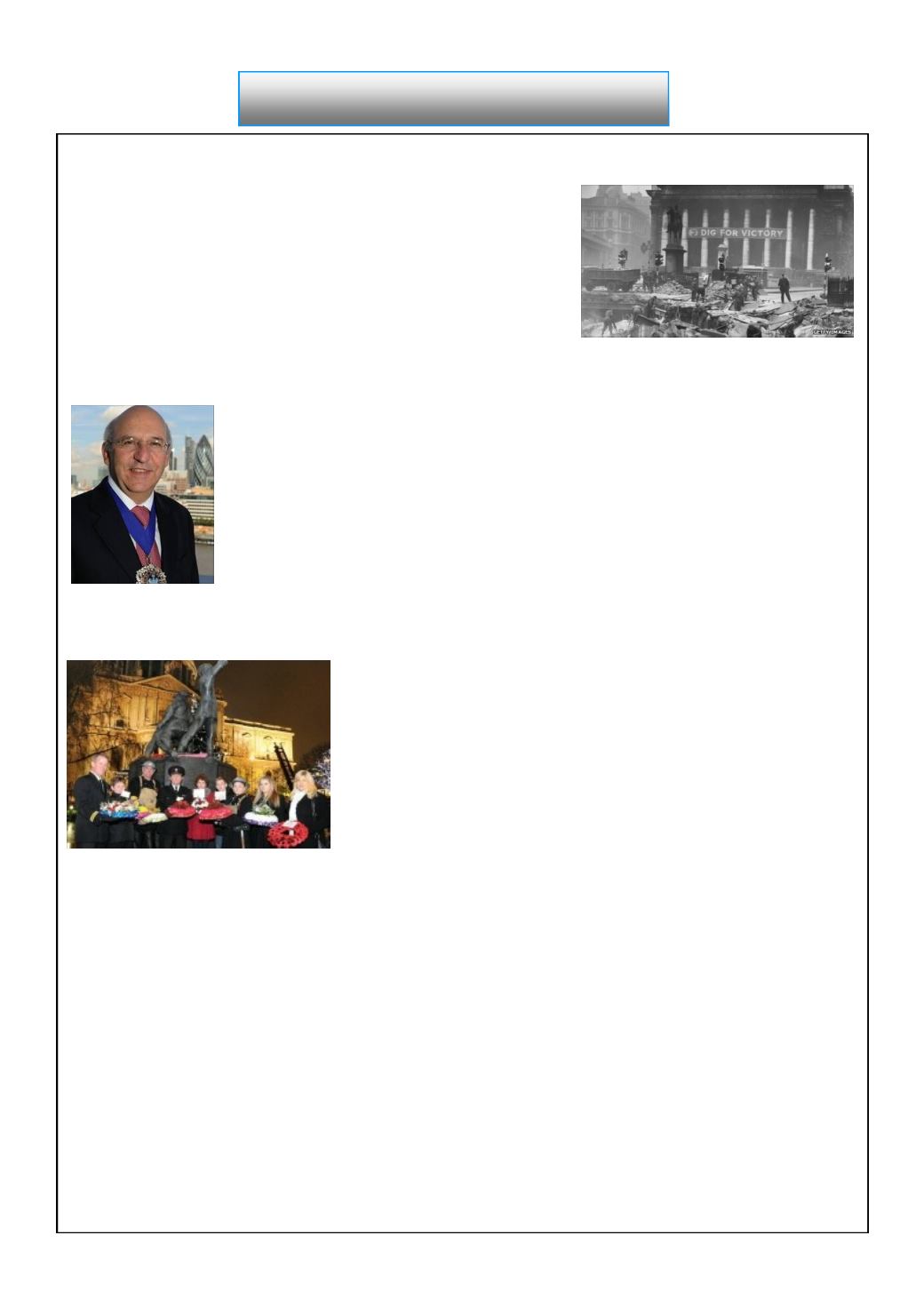

FireFighter News
Remembering the Great Blitz Fires of 1940/41
A wreath was been laid to commemorate the 70th anniversary of
the bombing of Bank underground station's booking hall which
killed 111 people. WCoFF members attended along with the
Lord Mayor
Alderman Michael Bear, Lord Mayor of the City of London, led a
minute's silence to pay tribute to the victims who died on 11 January
1941 during a bombing raid by German aircraft. Lord Mayor Bear
laid a wreath at the Walbrook entrance to Bank underground station.
The blast travelled through the tunnels killing people sleeping on the escalators and
platforms and throwing others in the path of incoming trains. People died under-
ground and on the surface and, in the aftermath of the bombing, an emergency bridge
was built over the huge crater to enable traffic to continue moving around the busy
interchange in the heart of the Square Mile.
Lord Mayor Bear said: "The familiar black-and-white images of that crater, with war-
dens surveying the damage, have been part of London's memory since the Second
World War. "More than 100 people lost their lives and, 70 years to the day, we pause
to remember them and the families they left behind."
A City procession to mark the Blitz of 29th December 1940
Two weeks earlier, on the night of 29 December 1940, the German air
force carried out a massed air attack on the City of London, which re-
sulted in a firestorm that destroyed the Guildhall, many Livery Halls
and eight churches built by Sir Christopher Wren. The destruction
covered most of the ancient Square Mile. Some 160 people lost their
lives and more than 500 people were injured. It was the second great
fire of London.
To commemorate the 70th anniversary of the air attack, a convoy of five World War II fire engines was
driven through the City of London leaving Dowgate fire station and passing the Tower of London on route
to St Paul's. Wreaths were laid at London's firemen's memorial. There was a special wreath for St Mary
Aldermanbury, a church which used to be situated in the Square Mile. This was bombed and finally dis-
mantled after the war before being rebuilt in Fulton, in the American state of Missouri, as a memorial to
the victims. The bombs narrowly missed St Paul's, with firefighters ordered to ensure the flames in nearby
buildings did not reach the cathedral.
Neil Bloxham of the Fire Service Preservation Group, which organised the event, said it was in honour of
the 16 crew members killed during the bombing "If it was not for those men and firemen like them, St
Paul's might not have been here today. Being a firefighter was totally different from what it is today and I
don't think we would ever get the amount of fires today in London that we did on that night."
Common Councillor Marianne Fredericks, who took part in the procession, said "It was a massive raid in
the City of London and the London docks. Hitler thought that if he destroyed the cathedral, he would
crumble the spirit of the nation. But St Paul's survived, and it became a beacon of pride for Londoners and
the country."
















